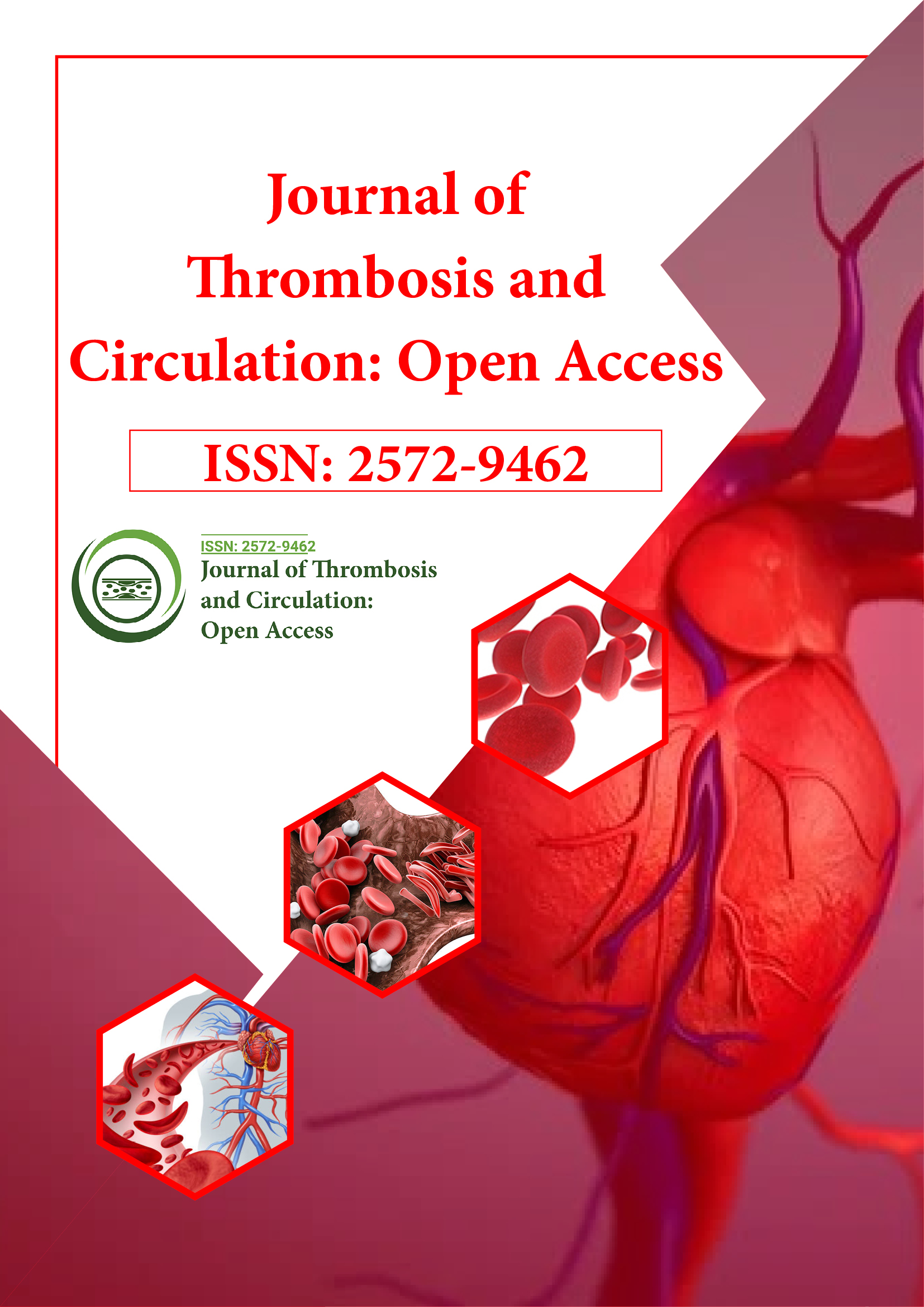Indexed In
- RefSeek
- Hamdard University
- EBSCO A-Z
- Publons
- Google Scholar
Useful Links
Share This Page
Journal Flyer

Open Access Journals
- Agri and Aquaculture
- Biochemistry
- Bioinformatics & Systems Biology
- Business & Management
- Chemistry
- Clinical Sciences
- Engineering
- Food & Nutrition
- General Science
- Genetics & Molecular Biology
- Immunology & Microbiology
- Medical Sciences
- Neuroscience & Psychology
- Nursing & Health Care
- Pharmaceutical Sciences
Opinion - (2025) Volume 11, Issue 1
In-depth Analysis of Pathophysiology and Clinical Symptoms in Thrombotic Diseases Demystified
Lisa Yanek*Received: 21-Mar-2024, Manuscript No. JTCOA-24-25201; Editor assigned: 23-Mar-2024, Pre QC No. JTCOA-24-25201 (PQ); Reviewed: 07-Apr-2024, QC No. JTCOA-24-25201; Revised: 24-Feb-2025, Manuscript No. JTCOA-24-25201 (R); Published: 03-Mar-2025, DOI: 10.4172/2572-9462.25.11.294
Introduction
Thrombotic diseases, characterized by the formation of blood clots within blood vessels, are a significant health concern worldwide. These conditions can lead to serious complications such as heart attack, stroke, and pulmonary embolism if left untreated. Understanding the causes, symptoms, and treatment options for thrombotic diseases is crucial for effective management and prevention.Description
Thrombotic diseases often arise from an imbalance in the blood clotting process. Normally, blood clotting, or coagulation, is a vital mechanism that prevents excessive bleeding when a blood vessel is injured. However, certain factors can disrupt this delicate balance and promote the formation of abnormal blood clots. Common causes of thrombotic diseases include:
Genetic factors: Inherited conditions such as factor V Leiden mutation or deficiencies in anticoagulant proteins can predispose individuals to thrombotic events.
Acquired factors: Chronic conditions such as diabetes, hypertension, obesity, and atherosclerosis can damage blood vessels and increase the risk of clot formation.
Lifestyle factors: Sedentary lifestyle, smoking, and poor diet can contribute to the development of thrombotic diseases by promoting inflammation and endothelial dysfunction.
Medical conditions: Certain medical conditions such as cancer, autoimmune disorders, and pregnancy can also increase the risk of thrombosis.
Symptoms: The symptoms of thrombotic diseases can vary depending on the location and size of the blood clot. Common signs and symptoms include:
Chest pain: Chest pain or discomfort may occur in cases of thrombosis affecting the coronary arteries, leading to conditions like angina or myocardial infarction (heart attack).
Shortness of breath: Blood clots in the lungs (pulmonary embolism) can cause sudden onset of shortness of breath, chest pain, and coughing up blood.
Neurological symptoms: Stroke, caused by blood clots in the brain, can manifest as sudden weakness or numbness on one side of the body, difficulty speaking or understanding speech, and loss of balance or coordination.
Swelling and pain: Deep Vein Thrombosis (DVT) typically presents with swelling, pain, warmth, and redness in the affected limb.
Treatment: The treatment of thrombotic diseases aims to prevent further clot formation, dissolve existing clots, and reduce the risk of complications. Common treatment strategies include:
Anticoagulant medications: Drugs such as heparin and warfarin are commonly used to prevent blood clot formation and reduce the risk of thrombotic events. Newer anticoagulants like Direct Oral Anticoagulants (DOACs) have also emerged as effective alternatives.
Thrombolytic therapy: In cases of severe thrombosis, thrombolytic agents such as tissue Plasminogen Activator (tPA) may be administered to dissolve blood clots quickly.
Compression therapy: Compression stockings or devices are often used to prevent DVT by promoting blood flow in the legs and reducing the risk of clot formation.
Surgical interventions: In certain situations, surgical procedures such as thrombectomy (removal of blood clots) or angioplasty with stent placement may be necessary to restore blood flow in blocked vessels.
Prevention: Prevention plays a crucial role in reducing the burden of thrombotic diseases. Lifestyle modifications such as regular exercise, maintaining a healthy weight, quitting smoking, and adopting a balanced diet can lower the risk of thrombosis. Additionally, managing underlying medical conditions and adhering to prescribed medications can help prevent complications.
Conclusion
Thrombotic diseases pose a significant threat to global health, contributing to morbidity and mortality worldwide. By understanding the causes, symptoms, and treatment options for these conditions, healthcare providers and individuals can work together to effectively manage thrombotic diseases and reduce their impact on public health.
Citation: Yanek L (2025) In-depth Analysis of Pathophysiology and Clinical Symptoms in Thrombotic Diseases Demystified. J Thrombo Cir. 11:294.
Copyright: © 2025 Yanek L. This is an open-access article distributed under the terms of the Creative Commons Attribution License, which permits unrestricted use, distribution and reproduction in any medium, provided the original author and source are credited.
